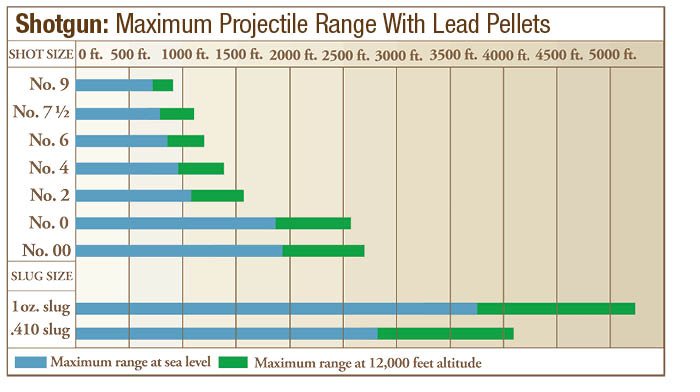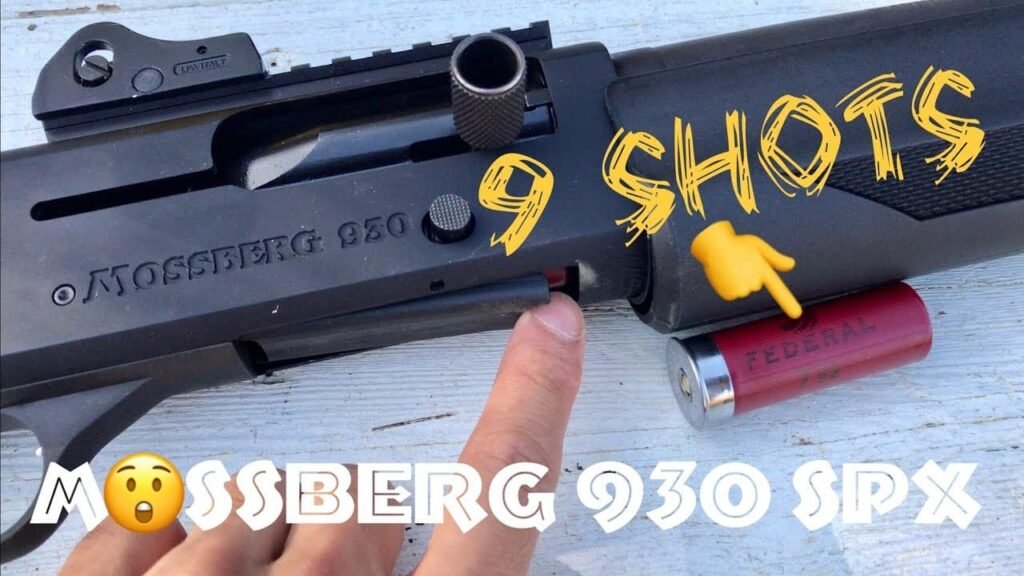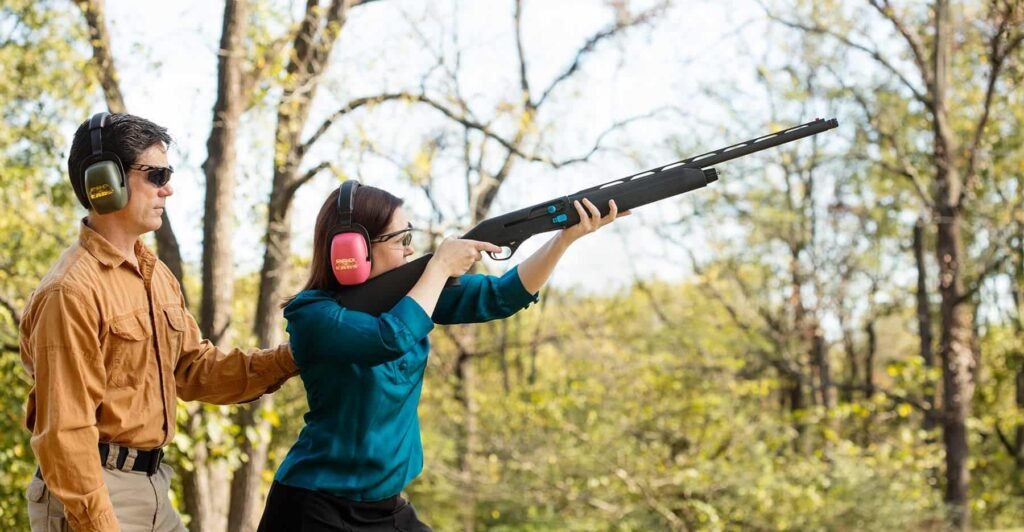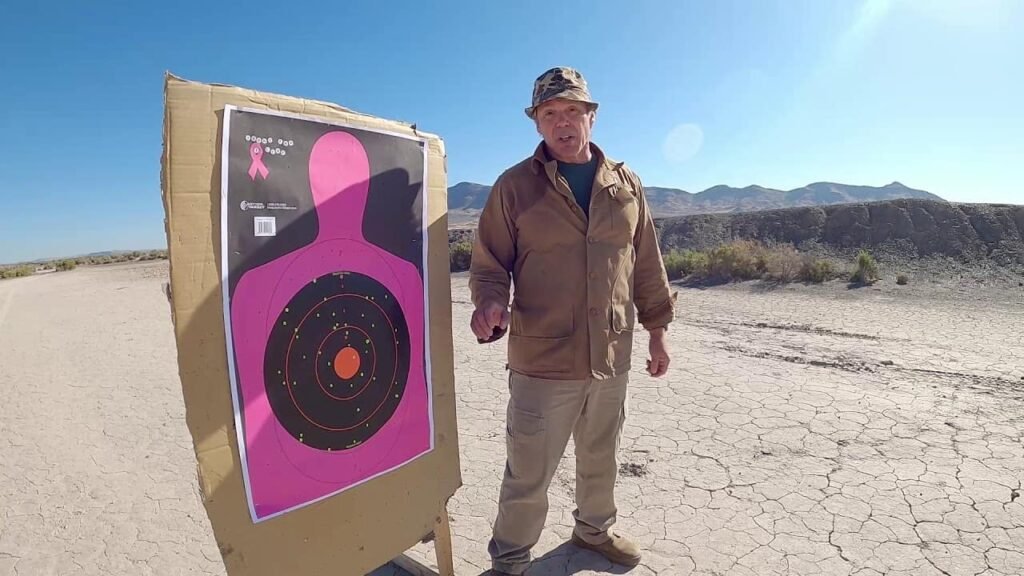Welcome, fellow enthusiasts of the outdoors and firearms! If you’ve ever wondered about the remarkable journey of birdshot once it leaves the barrel, you’re in the right place. Prepare to embark on an exhilarating exploration of this fascinating topic, guided by experts in the field.
Birdshot, ideal for hunting birds and small game, typically travels 100-200 yards when shot from a shotgun. Yet, its range varies due to shot size, shotgun gauge, and firing angle.
Join us as we uncover the secrets behind the flight of birdshot, from the moment it leaves the muzzle to its eventual destination among the wilds.
Understand The Birdshot Travel – Let’s Explore!
Birdshot comprises small pellets designed primarily for hunting birds and small game. These pellets, often made of lead, vary in size and number.
The effectiveness of birdshot depends on factors such as the shot’s size, the shotgun’s gauge, and the fire’s angle.
While smaller shot sizes provide a wider spread, larger gauges offer increased velocity and range. Understanding these elements is crucial for hunters to maximize the effectiveness of birdshot in their pursuits.
Factors Influencing Birdshot Range – You Should Know!

Speed Matters:
How fast birdshot travels from your shotgun determines how far it can go. If it’s shot out faster, it can cover more distance before it starts to slow down and spread out. So, faster shots generally mean the birdshot can reach farther targets.
Size of the Pellets:
The size of the pellets in the birdshot also makes a big difference. Smaller pellets lose speed and power quicker, so they don’t go as far as bigger pellets. That’s why bigger pellets are better for shooting at longer distances.
Choosing the Right Choke:
The choke of your shotgun barrel affects how wide or tight the birdshot spreads out. A tighter choke makes the birdshot stay closer together, which can help it go farther. But a looser choke means the birdshot spreads out more, limiting its range.
Length of Your Shotgun Barrel:
The length of your shotgun’s barrel can also affect how far the birdshot travels. Longer barrels can give the birdshot more power and help it go farther. But really long barrels might be hard to handle in certain situations.
Different Types of Ammo:
The kind of birdshot you use can also impact how far it travels. Some types are made of different materials or are designed for specific purposes, like hunting certain animals. These variations can affect how well the birdshot keeps its speed and power over distance.
Testing Birdshot Range – Let’s Try It Now!

Laboratory Testing:
- Controlled experiments were conducted in a lab setting.
- Utilizes specialized equipment to measure distance, velocity, and dispersion patterns.
- Provides precise data under controlled conditions.
- Can involve shooting birdshots through standardized test barrels to simulate real-world scenarios.
Field Testing:
- Conducted in outdoor environments to simulate real shooting conditions.
- Involves shooting birdshots at targets placed at various distances.
- Factors such as weather, terrain, and shooter skill are taken into account.
- Provides practical insights into how birdshot performs in real-world situations.
Accuracy Assessment:
- Involves comparing the actual spread pattern of birdshot with the expected pattern.
- Measures how closely the birdshot pellets cluster around the intended target.
- Helps evaluate the consistency and effectiveness of birdshot at different distances.
Range Determination:
- Determines the maximum effective range of birdshot for a given load and shotgun configuration.
- It involves shooting birdshot at progressively longer distances until it no longer maintains sufficient velocity and energy to hit the target reliably.
- It helps shooters understand the practical limitations of birdshot and select appropriate shooting distances.
Data Analysis:
- It involves analyzing the collected data to conclude birdshot performance.
- Considers factors such as pellet spread, penetration depth, and impact energy.
- It helps identify patterns and trends in birdshot behaviour across different testing conditions.
Safety Precautions:
- Emphasizes the importance of following safety protocols during testing.
- Includes measures such as wearing eye and ear protection, using appropriate backstops, and ensuring a safe shooting environment.
- It helps minimize the risk of accidents or injuries during birdshot testing.
Read: Bend Oregon Travel Guide – Unlock The Wonders In 2024!
Practical Considerations For Birdshot Range – Check It!

Hunting Applications:
When considering the range of birdshot for hunting, several practical factors come into play. Different types of games require different shooting distances.
For example, upland bird hunting often involves relatively close-range shots, while waterfowl hunting may require longer shots. Understanding the effective range of birdshot for the specific game being pursued is crucial for ethical and successful hunting.
Optimal Shooting Distances:
Determining the optimal shooting distance for birdshot involves balancing factors such as pellet energy, shot pattern density, and ethical considerations.
While birdshot can travel a significant distance, its effectiveness diminishes with range. Shooters must gauge the maximum effective range of their chosen load and choke combination to ensure clean and humane kills. This often requires practice and familiarity with one’s equipment.
Ethical Considerations:
Ethical hunting practices dictate that shooters take shots within a range where they can reliably and humanely dispatch their target.
Beyond a certain distance, the spread of birdshot becomes too wide, reducing the probability of hitting vital organs and increasing the likelihood of wounding rather than cleanly killing the animal. Responsible hunters prioritize shot placement and choose shooting distances that minimize suffering and waste.
Shotgun Setup and Accessories:
In addition to understanding the limitations of birdshot range, hunters can optimize their shotgun setup and accessories to enhance their shooting performance.
This may include selecting an appropriate choke for the desired shooting distance, choosing a shotgun with a barrel length that balances maneuverability and range, and using quality optics or sights to aid in aiming at longer distances.
Environmental Factors:

Environmental conditions such as wind, weather, and terrain can also influence the effective range of birdshot. Wind can affect the trajectory and spread of the shot pellets, while adverse weather conditions may reduce visibility and impair shooting accuracy.
Hunters must adapt their shooting techniques and adjust their shooting distances accordingly based on prevailing environmental factors.
Practice and Skill Development:
Ultimately, achieving proficiency with birdshot at various ranges requires practice and skill development. Regular practice sessions allow shooters to become familiar with the performance characteristics of their chosen ammunition and equipment.
By honing their marksmanship skills and gaining confidence in their shooting abilities, hunters can increase their effectiveness within the practical range of birdshot.
Safety Precautions And Regulations – Remember It!
| Safety Precautions and Regulations | Explanation |
| Safety Guidelines | Following Essential Safety Protocols – Proper Handling and Storage of Firearms – Treating Every Firearm as Loaded – Use of Safety Equipment |
| Protective Gear for Shooting Activities | Eye and Ear Protection – Importance of Protective Gear |
| Legal Considerations | Familiarization with Local, State, and Federal Laws – Compliance with Hunting Regulations – Obtaining Necessary Permits and Licenses |
| Safe Shooting Environment | Selection of Safe Shooting Location – Clearing the Area of Obstructions – Communication and Coordination |
| Firearm Handling and Maintenance | Regular Inspection and Maintenance – Checking for Barrel Obstructions – Following Manufacturer Recommendations |
| Training and Education | Firearms Safety Training – Practice of Safe Handling Procedures – Continuing Education and Skill Development |
Read: Do You Prefer Having A Tour Guide For Travelling? – Read it!
Frequently Asked Questions:
1. How far can birdshot travel?
A birdshot’s distance depends on various factors such as velocity, shot size, choke selection, and shotgun barrel length. Generally, birdshot can travel up to several hundred yards but becomes less effective at longer ranges.
2. What is the maximum effective range of birdshot for hunting?
The maximum effective range of birdshot for hunting depends on the type of game being pursued and the specific load and choke combination used. Generally, most hunters consider birdshot effective within 40 yards for small game and upland birds and up to 50-60 yards for waterfowl.
3. Is birdshot effective for home defense?
Birdshot can be effective for home defense under certain circumstances, particularly when overpenetration is a concern. However, it may not provide sufficient stopping power at longer distances and should be used cautiously.
4. Are there any legal restrictions on birdshot usage?
Laws and regulations regarding the use of birdshot vary by jurisdiction. Some areas may restrict hunting with birdshot, while others may have specific rules regarding maximum shooting distances or prohibited areas.
5. What safety precautions should I take when using birdshot?
Safety precautions when using birdshot include treating every firearm as loaded, using proper safety equipment such as eye and ear protection, and following all applicable laws and regulations.
6. How can I test the range of birdshot?
Birdshot range can be tested through laboratory experiments using specialized equipment or in real-world field testing scenarios. Both methods provide valuable insights into the performance of birdshot at different distances.
7. What factors affect the spread of birdshot pellets?
Factors such as choke selection, shotgun barrel length, and shot size all influence the spread of birdshot pellets. A tighter choke will result in a narrower spread, while a shorter barrel may produce a wider spread.
8. Can birdshot be used for long-range shooting?
Birdshot is not typically used for long-range shooting due to its limited penetration and effectiveness at extended distances. Other types of ammunition, such as slugs or buckshot, are better suited for long-range shooting applications.
9. Are there specialized types of birdshot for specific hunting scenarios?
Yes, there are specialized types of birdshot designed for specific hunting scenarios, such as steel shot for waterfowl hunting or high-velocity loads for longer-range shooting. These specialized loads are tailored to provide optimal performance in specific situations.
10. What ethical considerations should I consider when using birdshot for hunting?
Ethical considerations when hunting with birdshot include selecting appropriate shooting distances to ensure clean and humane kills, respecting hunting regulations and bag limits, and minimizing the suffering of game animals.
Conclusion:
Factors such as velocity, shot size, choke selection, shotgun barrel length, and ammunition variations all play a crucial role in determining the range and effectiveness of birdshot.
By considering these factors and adhering to safety precautions and regulations, shooters can optimize their shooting experiences and achieve desired outcomes, whether hunting game or defending their homes.
Read:




